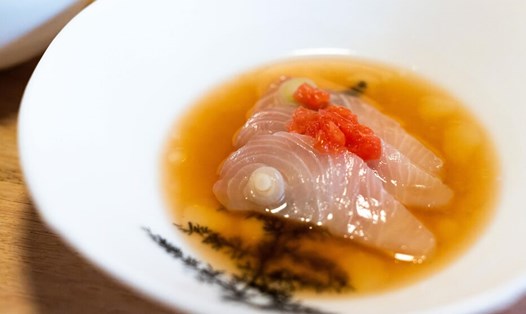Sashimi, the original flavor of the ocean
Sashimi is a traditional Japanese dish that includes slices of raw fish or seafood thinly sliced and not eaten with rice, in this dish, tuna, salmon and octopus are popular ingredients.
According to nutritionist Rakshita Mehra, currently working at the Diet Clinic India nutrition center (India): The fish used in sashimi must always meet high quality standards, ensure freshness and safety when eaten raw. Thanks to unprocessed, sashimi retains its lean protein, omega-3 fatty acids, vitamin D and essential minerals such as iodine and iron intact.
However, Mehra warned: If the fish is not properly preserved or does not have a clear origin, the risk of parasitic infection and food poisoning is very high.
Sushi, an artistic dish made from rice and fish
Unlike sashimi, sushi is a combination of vinegar-mixed rice and many other ingredients such as raw fish, vegetables, even fruits or eggs. Sushi has many variations: maki ( seaweed roll), temaki (hands- roll) or nigiri - a very special type of sushi.
The vinegar in sushi is an important factor in creating a harmonious flavor - a light sour taste from vinegar mixed with fresh fish to bring a complete culinary experience, Mehra expert analyzed. However, she also noted that some modern sushi with mayonnaise or fried foods can increase calories and sodium, losing the inherent health of the dish.
Nigiri, the minimalist sophistication
Nigiri is a simple sushi with hand-held rice, placed on a slice of live fish, usually with a little wasabi between fish and rice.
Nigiri is a testament to the minimalist spirit in Japanese cuisine. No need for too many ingredients, just need fresh fish and the right rice, the dish is enough to be attractive, Mehra commented.
For pregnant women, young children or people with weak immune systems, experts recommend limiting the intake of raw fish or fish with high mercury content such as tuna.











